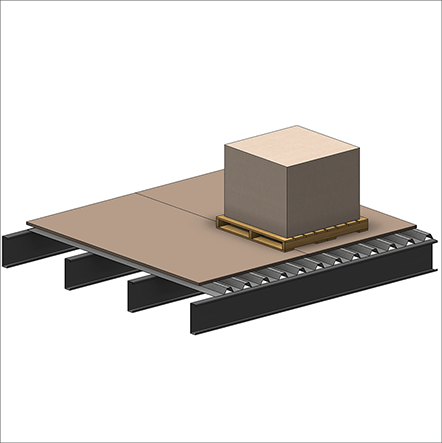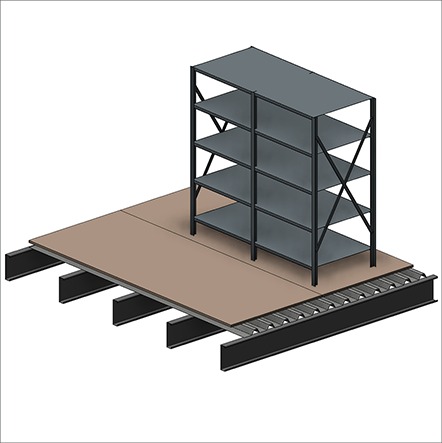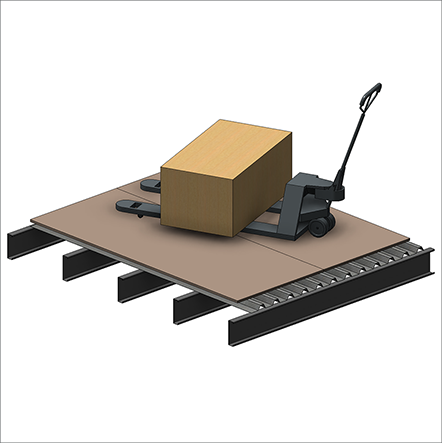DESIGN LOAD
Many factors contribute to the loads that affect the capacity requirements of your mezzanine. It is important to take these loads into consideration when approaching the mezzanine design.
Dead loads (anything permanent on the mezzanine, walls built on top, B-Deck and overlay, etc.) as well as live loads (racking on top of the mezzanine, pallet jacks, people standing and walking, etc.) needs to be taken into consideration when designing the mezzanine structure.
The decking or flooring of a mezzanine will vary by application but is generally composed of B-Deck underlayment and wood product finished floor, concrete or a heavy-duty steel grating. When designing a structural steel mezzanine, it is important to consider the application, as well as the equipment that will be used on top of the mezzanine. If pallet jacks are being used for example, a resin board overlay is ideal for a smooth rolling load.
Live loads are separated in two different categories: Uniformly Distributed Loads (UDL) and Point Loads. Refer to the drawings below for more information.







